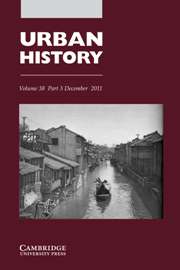
From racecourse to People’s Park and People’s Square: historical transformation and symbolic significance
Xiong Yue-zhi
论文摘要
abstract: Horse racing ended in Shanghai in 1945, but the public continued for a long time to make its opinion heard on the prohibition of horse racing and on the changing function of the racecourse. In 1951, the dust settled, and the racecourse became People’s Park and People’s Square. This article describes the ever changing symbolic significance of the racecourse that has played out against a backdrop of changing racecourse functions and varying intellectual currents. Initially, it was a relatively simple place of leisure. It later became a gambling arena where people were cheated of their money and sometimes murdered, a place where Chinese suffered discrimination, and a stage on which imperialism flaunted its military might. It had, in short, become a diabolic symbol of a multitude of evils. The call to change the racecourse merged powerfully with the struggle to oppose imperialism, regain the settlement and struggle towards civilization and democracy. In spite of changes in the ruling party and the replacement of one regime by another, a remarkable ideological and intellectual continuity persisted from the 1930s to the 1950s.
杂志出处:Urban History / Volume 38 / Special Issue 03, pp 475 - 490
出版时间:2011.12



